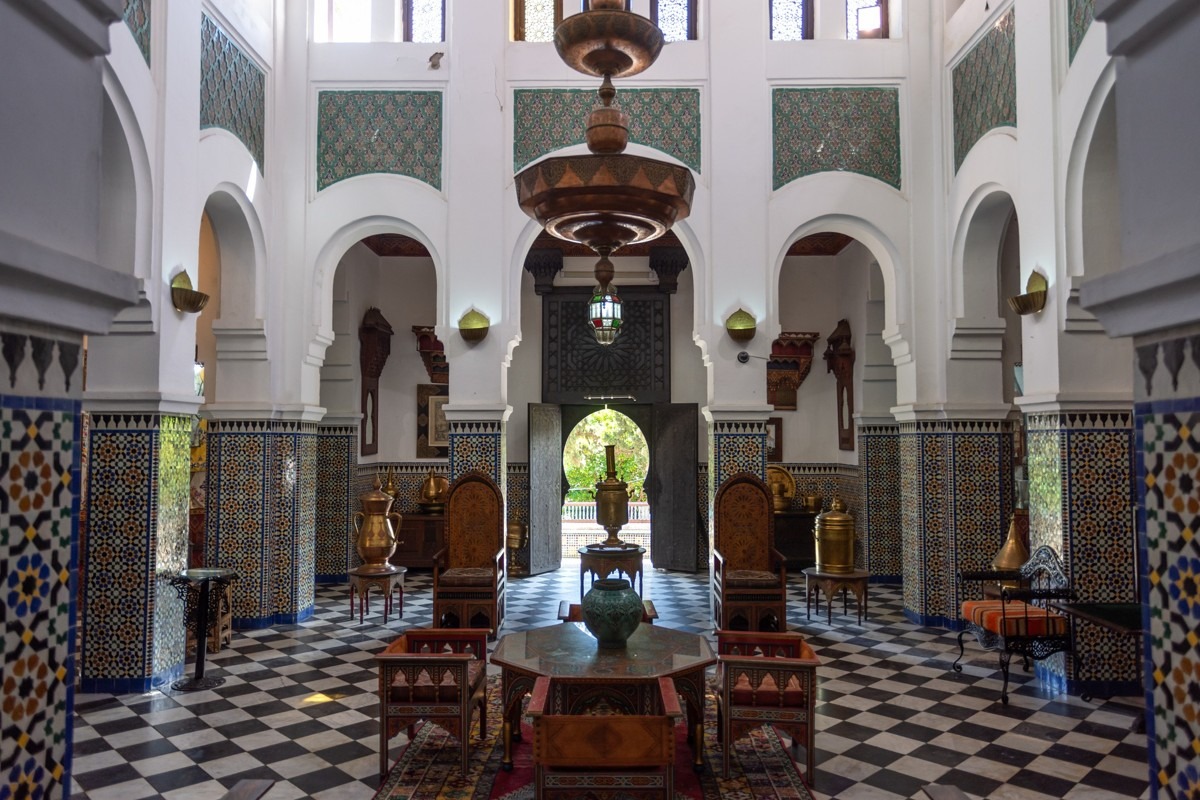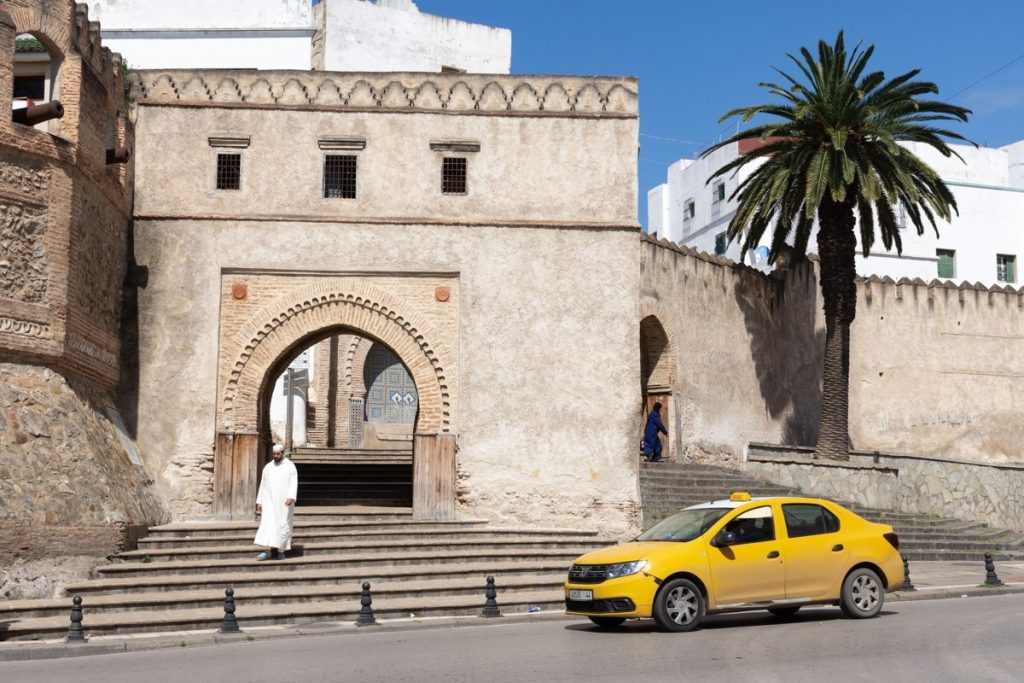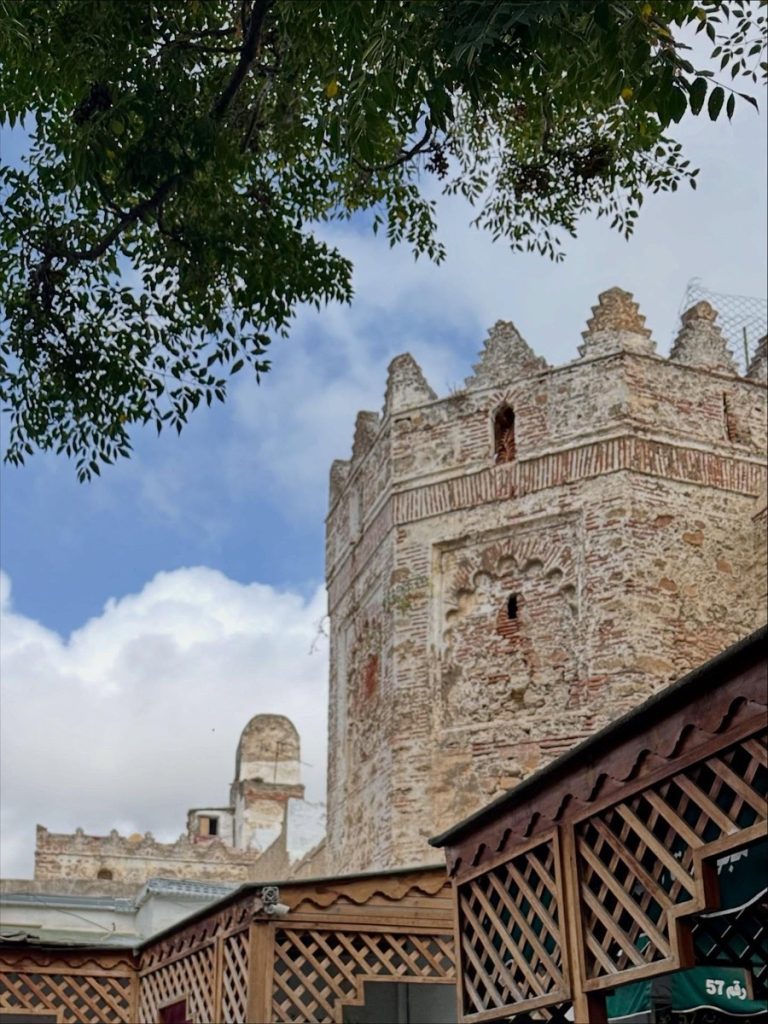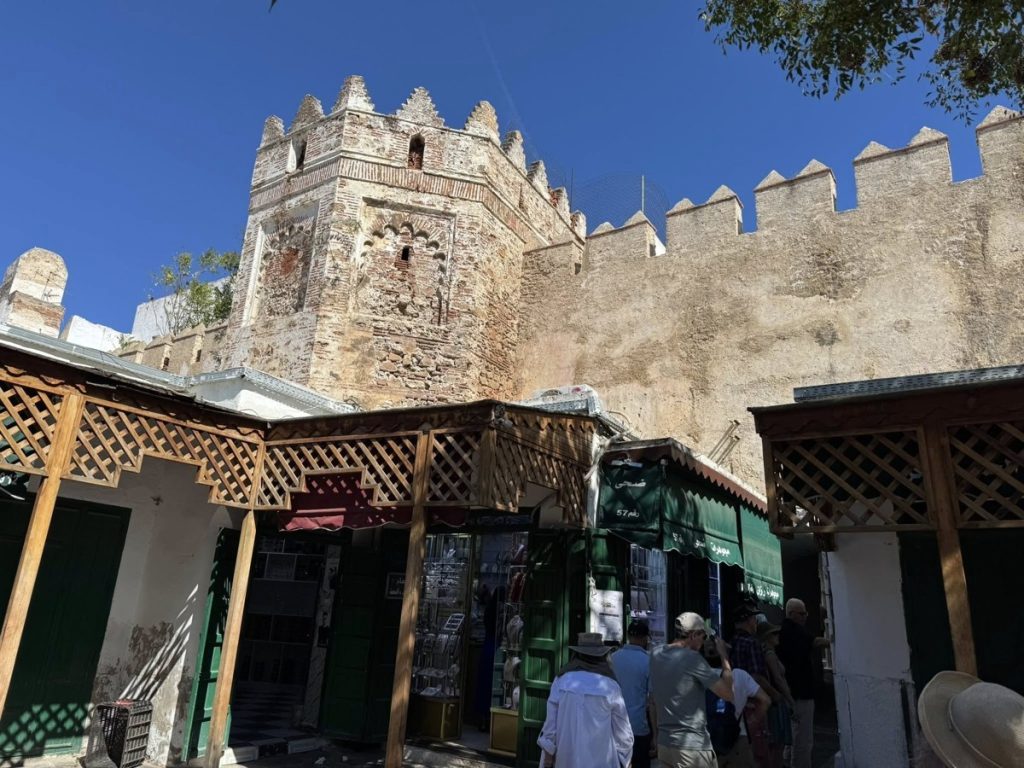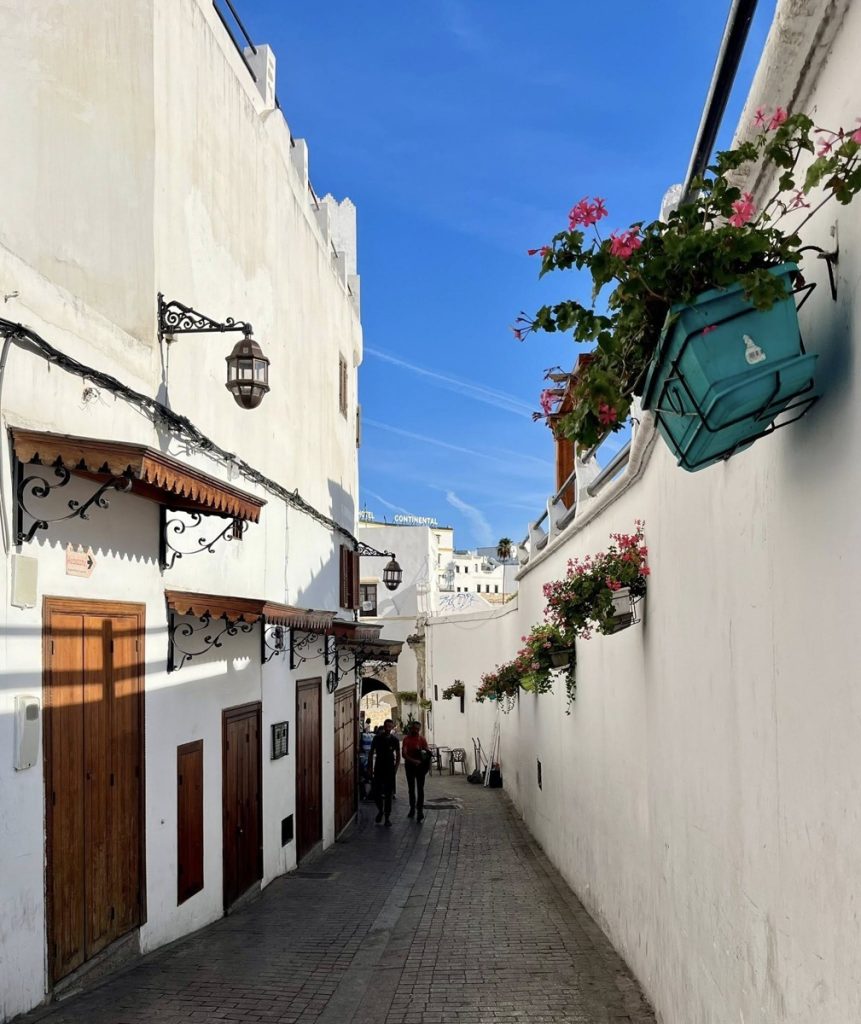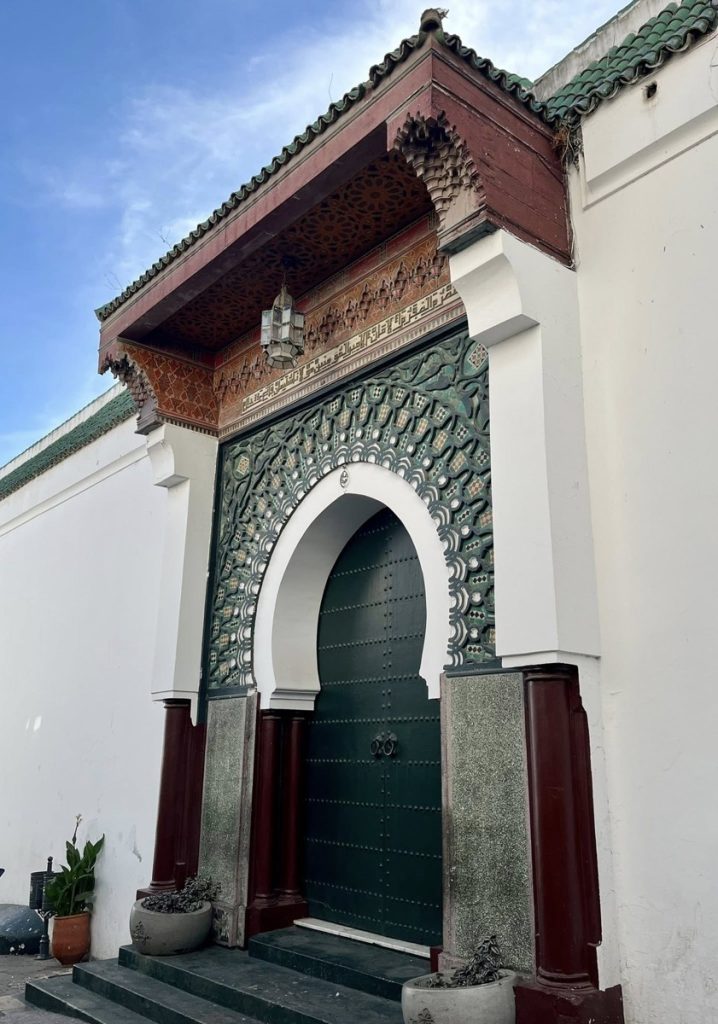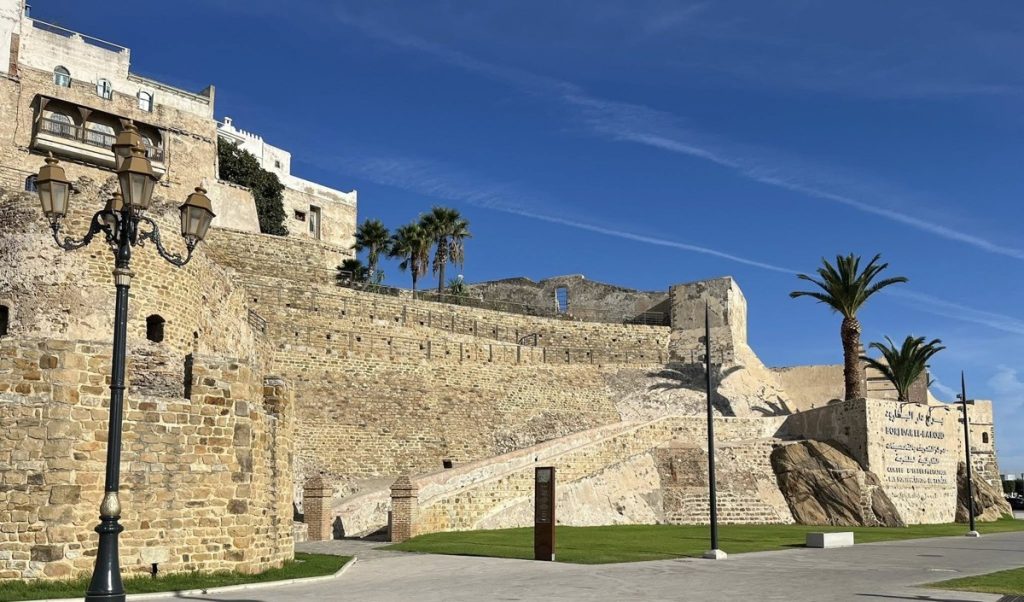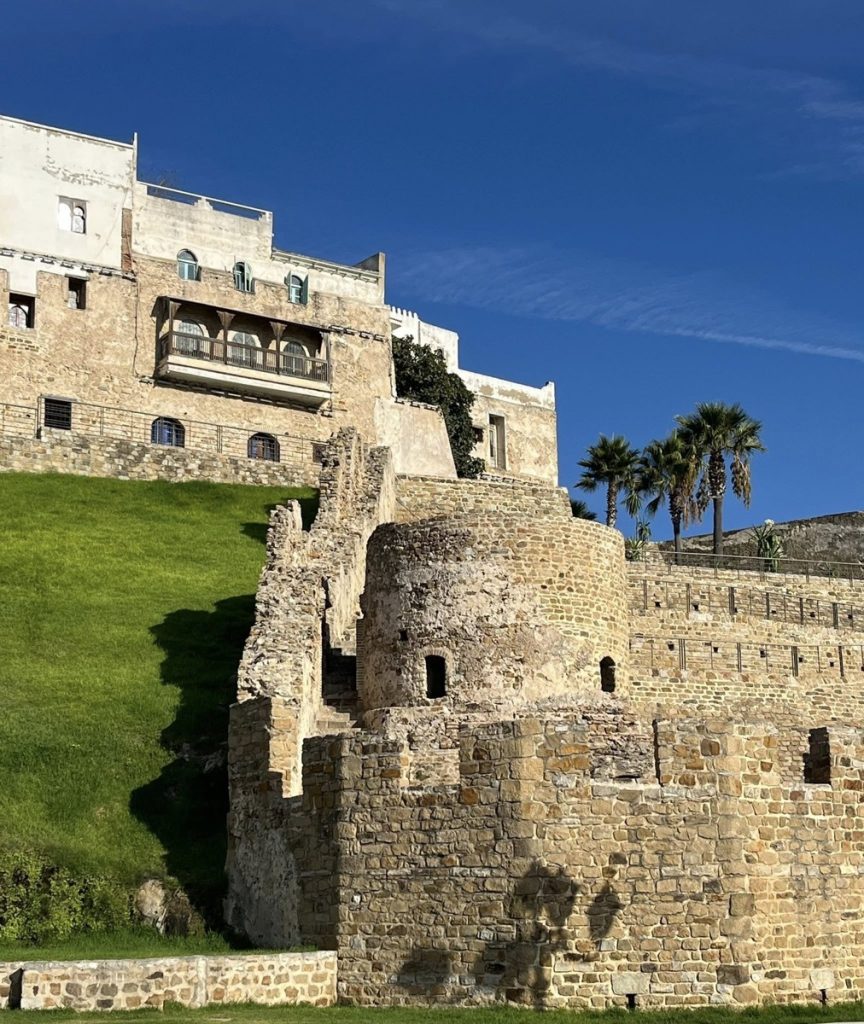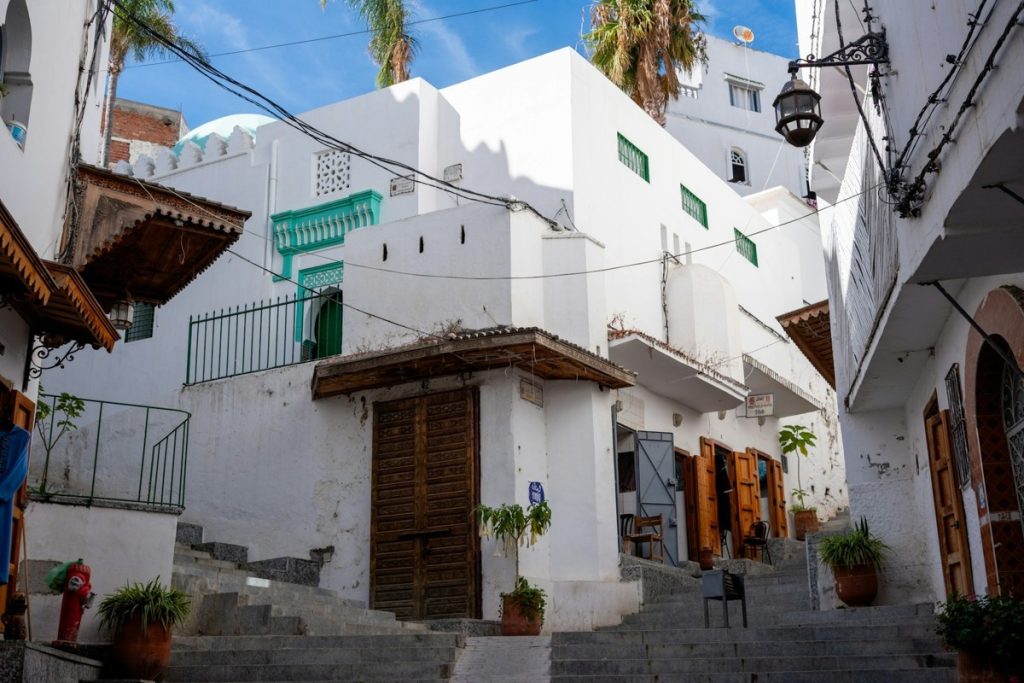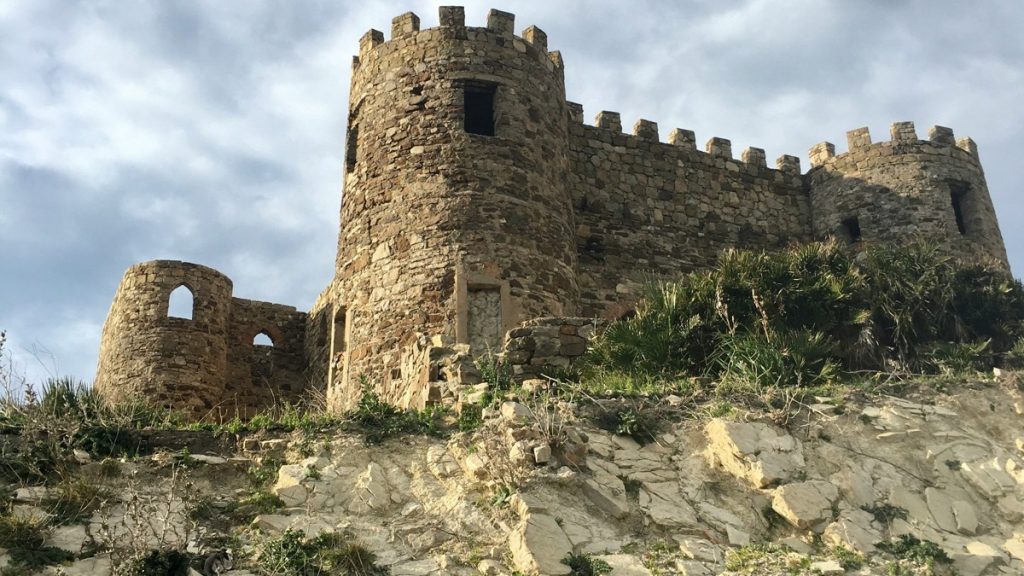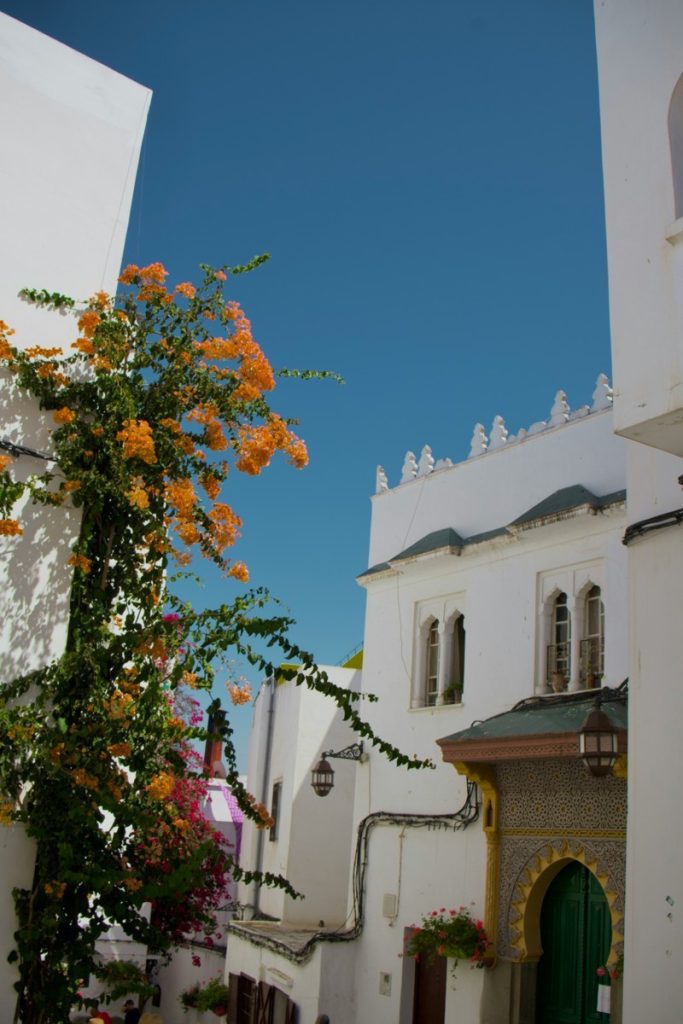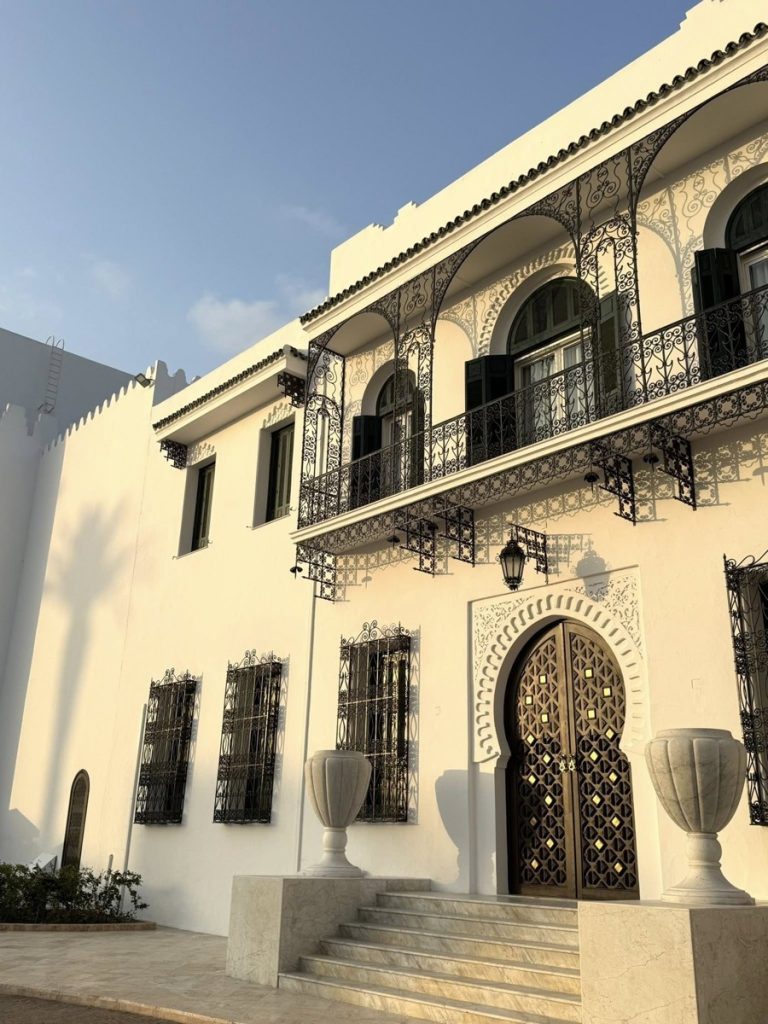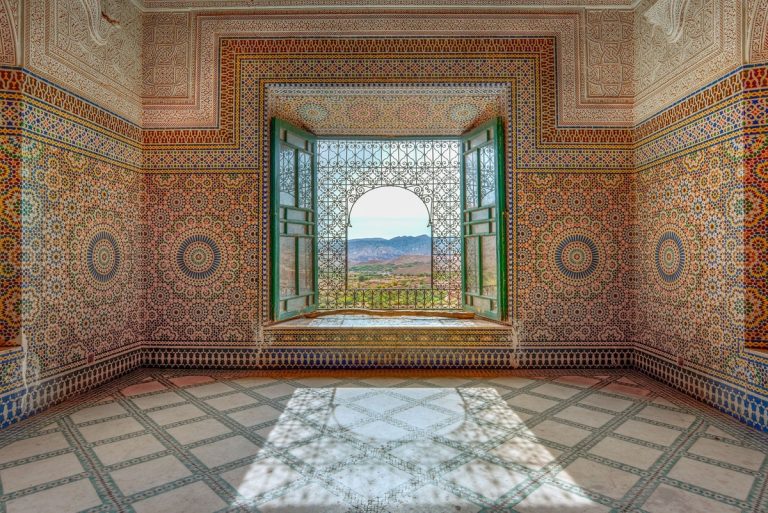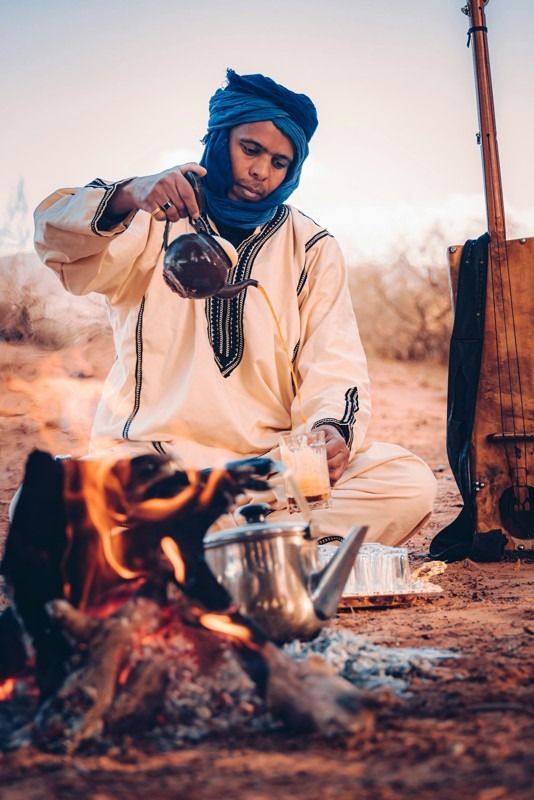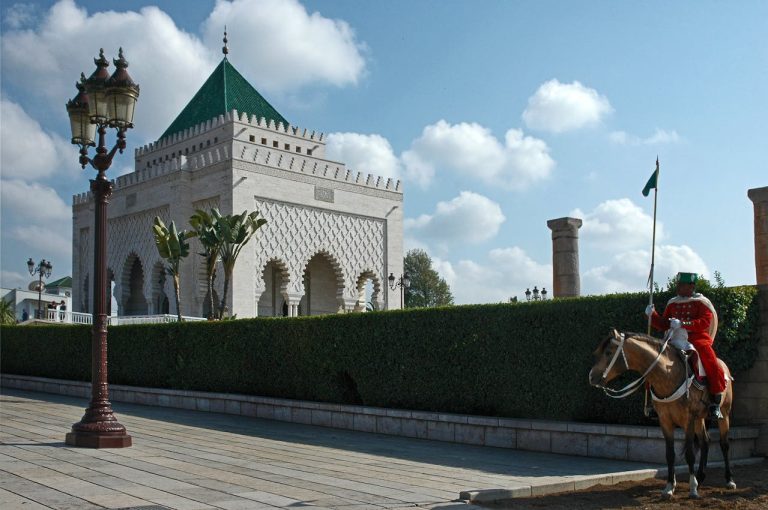The Influence of Andalusian Culture on Morocco
The influence of Andalusian culture weaves through Morocco, much like the delicate patterns found in a hand-woven carpet, and honestly, most visitors overlook it entirely. Most visitors miss it entirely. They’ll photograph the stunning archways of a riad, hum along to a street musician’s melody, or marvel at intricate tilework without realizing they’re witnessing an 800-year-old love story between two lands separated by just fourteen kilometers of sea.
I remember the first time this reality really hit me—I was standing in the courtyard of the Bahia Palace in Marrakech (I must’ve been about twelve), and my grandmother traced her fingers along the carved stucco walls. “This,” she whispered, “is our heritage returning home.” She explained how the Moorish architectural influence we see everywhere in Morocco isn’t just Moroccan at all—it’s what our ancestors brought back when they were expelled from Al-Andalus, modern-day Spain. That moment changed how I see my country.
The connection between Morocco and Andalusia runs deeper than most history books acknowledge. When the Reconquista finally pushed the last Muslims out of Granada in 1492, they didn’t just carry their belongings—they transported an entire civilization’s worth of knowledge, artistic traditions, and cultural practices across the Strait of Gibraltar. Not only were these refugees seeking shelter, but they were also preserving a legacy that history would have otherwise erased. And Morocco? We became the guardian of that legacy.
Andalusian Architecture: Where Morocco’s Soul Meets Spanish Elegance
Walk through any medina in Morocco—Fez, Tetouan, Chefchaouen—and you’re essentially touring an outdoor museum of Andalusian architectural heritage. Even many Moroccans don’t consciously separate the influence from “traditional” Moroccan design, as it permeates every aspect of our identity.
The classic Moroccan riad is perhaps the most obvious example. These inward-facing houses with central courtyards weren’t originally Moroccan—they’re directly descended from Andalusian homes designed for privacy and climatic comfort. Consider this: in the scorching heat of southern Spain (or Morocco), you want a cool, shaded courtyard with a fountain at its heart, rooms that open inward rather than onto the street, and thick walls that insulate against temperature extremes.
But here’s where it becomes interesting—the Moroccans who inherited this architectural tradition didn’t just copy it. They transformed it. The zellige tilework that covers Moroccan buildings is like geometric poems. Moroccan artisans brought this technique from Andalusia to unprecedented heights, surpassing even their Spanish predecessors. I’ve spent hours watching the maalems (master craftsmen) in Fez carefully chip away at glazed tiles, creating thousands of tiny geometric pieces that will eventually form patterns so complex they seem almost mathematical in their precision.
The pointed horseshoe arches you see everywhere—from mosque doorways to palace entrances—those came straight from Cordoba and Seville. Islamic Spain is the birthplace of the moucharabieh, intricately carved wooden screens that conceal women’s views. Even the gardens, with their quadripartite layout representing the four rivers of paradise, followed Andalusian models like those at the Alhambra.
Tetouan, in northern Morocco, is probably the purest example of this architectural fusion. The Spanish themselves nicknamed it “daughter of Granada” because so many Granadan refugees settled there after 1492. Walking through Tetouan’s medina feels like stepping into a time machine—the whitewashed walls, green-tiled roofs, and wrought-iron balconies create an atmosphere that’s distinctly different from other Moroccan cities. It’s more… delicate, somehow. It exudes a particular Spanish refinement.
I had a conversation once with an architect friend from Granada who visited Fez with me. She kept stopping, touching walls, and examining doorways. Finally she said, “This is what we lost. This place is what my ancestors built before they were forced to destroy or abandon it.” There was this profound sadness in her voice—but also wonder, because here it still existed, lived, breathed, and functioned in daily life rather than being preserved as museum pieces.
The Haunting Melodies: Andalusian Music’s Moroccan Renaissance
While Spain nearly extinguished Andalusian musical traditions, Morocco provided them with refuge and sparked a full-blown renaissance. The al-Ala, as we call our version of Andalusian classical music, is considered one of Morocco’s most precious cultural treasures. And it’s very much alive—not locked away in concert halls, but performed at weddings, religious celebrations, and cultural festivals throughout the country.
The system is incredibly complex (and honestly, I’m still learning its intricacies even after a lifetime of listening to it). The al-Ala consists of eleven noubat (suites), each associated with a different mode and traditionally performed at specific times of day. Each suite contains five movements called mizan, distinguished by their rhythmic patterns. The whole thing is based on the musical system developed in medieval Al-Andalus by Ziryab, the legendary 9th-century musician who revolutionized everything from musical theory to dining etiquette.
What most impresses me about the Andalusian music influence is its preservation and evolution. The core repertoire—songs with titles like “Lamma Bada Yatathana” and “Ya Mal-I Sham”—has remained largely unchanged for centuries. People say that these songs were sung in the courts of Cordoba and Seville. Hearing them now is like touching a living thread that goes back in time. But contemporary Moroccan musicians have also adapted and experimented, creating fusion styles that blend al-Ala with other Moroccan musical traditions or even modern genres.
I remember attending an Andalusian music festival in Fes a few years back—it was during Ramadan, and the performances happened late into the night. The orchestra sat on stage in their white djellabas, the oud players and violinists forming the melodic core, while the vocalists took turns delivering these incredibly ornate, melismatic lines. The audience wasn’t just listening passively; people were nodding along, making small gestures with their hands, and some were quietly singing along to familiar passages. There was this sense of communal ownership, like this music belonged to everyone in the room.
The instruments themselves tell the story of cultural exchange. The oud (lute) migrated from the Middle East to Andalusia and then to Morocco, where it became central to our musical identity. The rebab (a bowed string instrument) followed a similar path. The darbuka (goblet drum) and tar (tambourine) that provide the rhythm a base also have ties to Andalusia. Playing these instruments isn’t just making music; it’s also taking part in a tradition that goes beyond national borders and speaks to a shared Mediterranean heritage.
Cultural Customs: The Invisible Threads of Daily Life
This is where Andalusian cultural heritage becomes really subtle and fascinating, because it’s not about monuments or formal performances—it’s about how people live their daily lives. Moroccan culture has deeply ingrained some customs, almost completely forgetting their Andalusian origins.
Take tea culture, for example. Yes, Moroccan mint tea is iconic, but the ceremonial aspect of tea service—the specific movements, the height from which you pour, the importance of hospitality—these rituals have distinct parallels to Andalusian customs. When I pour tea for guests (and trust me, after pouring thousands of glasses over the years, you develop a certain technique), I’m unconsciously following patterns established centuries ago in places I’ve never been.
Moorish design elements extend far beyond architecture into everyday objects. The brass and copper work you see in the souks—trays, lanterns, tea services—often features designs that originated in Andalusia. The geometric patterns, arabesque flourishes, and the combination of functionality and beauty represent aesthetic principles that came north across the Mediterranean with refugees determined to maintain their artistic traditions.
Another area where the influence is profound, albeit difficult to trace, is food. The use of certain spice combinations, the concept of dishes like pastilla (that incredible savory-sweet pigeon pie with layers of phyllo pastry), and even the tradition of starting meals with small salads are all potentially rooted in Andalusian culture. When the Moriscos (Muslims who remained in Spain after the Reconquista) were finally expelled in the early 1600s, they brought recipes and cooking techniques that enriched an already sophisticated Moroccan cuisine.
Even the language itself bears traces of Andalusian culture. Certain words in Moroccan Darija (colloquial Arabic) come from the Andalusian Arabic dialect, which itself was influenced by medieval Spanish. Even some place names in northern Morocco have unmistakable Spanish echoes—though determining exactly which influence came when can be like trying to separate threads in a tapestry that’s been woven and rewoven multiple times.
Gardens deserve special mention. The Andalusian influence on Moroccan culture is perhaps nowhere more evident than in garden design. The concept of the riad garden—that peaceful, green sanctuary in the heart of a building—follows Andalusian models that themselves were inspired by Persian and Roman gardens. The Jardin Majorelle in Marrakech, the Andalusian Gardens in Rabat, and the gardens of the various royal palaces… they all employ the quadripartite layout, the combination of water features and greenery, and the use of fragrant plants like jasmine and orange blossoms.
I’ve always found it poignant that some of the most beautiful examples of Islamic garden design survive in Spain itself—at the Alhambra in Granada and the Alcazar in Seville—while their descendants continue evolving in Morocco. It’s as if the tradition split, with each branch developing its own character while remaining recognizably related.
Cities as Living Museums: Tetouan, Fez, and Chefchaouen
Certain Moroccan cities function as living repositories of Andalusian heritage in Morocco, and visiting them is like stepping into different chapters of the same long story. Each absorbed waves of Andalusian refugees at different times and developed its own distinct flavor of this shared culture.
Tetouan might be the most overtly Andalusian city in Morocco. Founded in the 15th century by refugees from Granada, it maintains an almost palpable Spanish atmosphere. The layout of the medina, the style of buildings, and even the local dialect all bear witness to Tetouan’s Granadan origins. The city was deliberately designed to recreate what the refugees had lost, down to specific neighborhood names that corresponded to districts in Granada. Walking through Tetouan’s souks, you notice differences from other Moroccan cities—the proportions feel different, the light falls differently through the streets, and the sounds have a particular quality. It’s difficult to articulate, but once you’ve experienced it, you understand why the Spanish crown was so interested in maintaining connections with Tetouan even centuries after the Moorish period ended.
Fez, on the other hand, had been a major Islamic cultural center long before the Andalusian refugees arrived, but it absorbed tens of thousands of them following the Reconquista. They settled primarily in the Andalusian Quarter (yes, it’s actually called that—Adouat Al-Andalus), establishing their own mosques, schools, and workshops. The Andalusian influence on Fez’s already sophisticated culture created something extraordinary. The city became a crucible where different Islamic traditions—Moroccan, Andalusian, Arab, and Berber—melted together to create something new. Andalusian expertise enriched the famous Fez tanneries, the intricate metalwork, and the scholarly traditions of the Qarawiyyin University.
I’ve led countless tours through Fez, and I always make a point of taking people to the Andalusian Mosque (built in the 9th century but heavily influenced by Andalusian refugees) and explaining this history. Most tourists have no idea. They mistakenly perceive it as “traditional Moroccan” architecture, oblivious to the fact that they are witnessing a complex mosaic of influences from various historical periods and locations.
Chefchaouen, painted in those famous shades of blue, has its own Andalusian story. Founded in 1471 partially by refugees from Granada, the city served as a base for attacks against the Portuguese in northern Morocco. Its mountain location, surrounded by the Rif peaks, gave it a defensive advantage. But what’s intriguing is how the city developed a hybrid identity—Andalusian architecture and urban planning combined with Berber cultural elements from the surrounding tribes. Is it the blue paint that contributes to Chefchaouen’s photogenic appeal? That tradition might have Jewish origins (some say it represents the sky and heaven, serving as a reminder to live a spiritual life), but it’s been thoroughly adopted as part of the city’s identity.
The Craft Traditions: Hands That Remember
When I watch artisans work in the souks—tileworkers in Fez, woodcarvers in Marrakech, leather craftsmen in Tetouan—I’m witnessing Moorish cultural influence transmitted not through books or formal instruction, but through apprenticeships and family traditions that stretch back centuries. These crafts literally embody the Andalusian heritage; the knowledge is carried in skilled hands, not just minds.
Zellige tilework is likely the most well-known craft tradition that comes from Andalusia. The technique—cutting glazed tiles into precise geometric shapes and assembling them into complex patterns—requires years of training. Master craftsmen can create designs so intricate they seem almost impossible. The patterns themselves follow strict geometric principles developed in medieval Islamic mathematics, which flourished in Al-Andalus under scholars who were often polymaths—simultaneously astronomers, mathematicians, and artists.
I once spent an afternoon with a maalem in Fez who was creating a zellige panel for a restored riad. He explained that the patterns aren’t just decorative—they’re philosophical. The infinite repetition of geometric forms represents the infinite nature of creation, while the intricate interconnections symbolize the unity underlying apparent diversity. “Every tile is unique,” he told me, “but together they create harmony. That’s what the Andalusians understood, and that’s what we try to preserve.”
Wood carving follows similar principles. The carved cedar panels, screens, and ceilings you see in palaces and wealthy homes employ techniques perfected in Andalusian workshops. The craftsmen use traditional tools—essentially unchanged for centuries—to create arabesques, geometric patterns, and occasionally figurative designs (though figural representation is less common due to Islamic artistic preferences).
Even calligraphy carries the Andalusian mark. Refugee scribes and artists brought particular styles that flourished in Al-Andalus to Morocco, while Arabic calligraphy developed throughout the Islamic world. The flowing Maghrebi script used in many Moroccan manuscripts and architectural inscriptions has characteristics that distinguish it from other Arabic calligraphic traditions.
Religious and Intellectual Exchange: The Unseen Influence
The influence of Andalusian culture on Moroccan religious and intellectual life deserves an article of its own, honestly. When Andalusian scholars fled the Reconquista, they brought libraries, manuscripts, and most importantly, themselves—living repositories of knowledge accumulated over centuries of Islamic scholarship in Spain.
Moroccan religious architecture, particularly mosques, shows clear Andalusian influence in its design. The square minarets (rather than the round minarets common in other parts of the Islamic world), the use of specific decorative elements, and even the layout of prayer halls—these features connect Moroccan mosques to their Andalusian predecessors like the Great Mosque of Cordoba or the Mosque of Seville (now the Giralda tower).
The scholarly traditions similarly bear Andalusian marks. Andalusian refugees brought new ideas or improved on existing Moroccan traditions in Islamic law, Quranic studies, poetry, philosophy, and medicine. Many Andalusian scholars attended the Qarawiyyin University in Fez, which some say is the oldest university still in operation today. They continued their teaching and research traditions there.
The Emotional Legacy: Nostalgia and Identity
There’s something deeply emotional about Andalusian heritage in Morocco that goes beyond architecture and music—it’s about loss, preservation, and identity. For many Moroccans (including my own family), having Andalusian ancestry is a source of pride, a connection to a golden age of Islamic civilization. We speak of Al-Andalus with a nostalgia that borders on the mythical, though few of us have ever set foot in Spain.
This nostalgia has real cultural weight. This nostalgia shapes our self-perception, our connection with Europe, and our responsibility to preserve a heritage on the verge of destruction. When I visit the Alhambra in Granada (which every Moroccan should do at least once—it’s breathtaking and heartbreaking in equal measure), I feel a strange sense of homecoming mixed with profound loss. These were “our” buildings and “our” gardens, created by “our” ancestors—yet we can only visit as tourists now.
But here’s the beautiful thing: while Al-Andalus fell, its culture survived and evolved in Morocco. We didn’t just preserve it like specimens in amber; we made it our own, adapted it, enriched it, and kept it living and breathing. The Moorish influence on Morocco isn’t about dead history—it’s about a vibrant, continuing tradition that still shapes how we build, how we create art, how we make music, and how we understand beauty.
Contemporary Connections and Tourism
Today, the relationship between Morocco and Spain has changed from exile and loss to tourism, cultural exchange, and mutual recognition. Many Spanish tourists go to Morocco without even realizing it to look for signs of their “lost” Moorish heritage. Moroccans, on the other hand, go to Spain to see the Alhambra, the Mezquita of Cordoba, and the Alcazar of Seville, which their ancestors built.
UNESCO has recognized this shared heritage by designating numerous Moroccan sites as World Heritage Sites, often explicitly noting their Andalusian connections. UNESCO protects the medinas of Fez, Tetouan, and Essaouira, among others, due to their historical significance in preserving Andalusian culture.
Academic interest in this cultural exchange is also growing. Researchers from Morocco and Spain are recording links, following influences, and realizing that this shared history is important to both countries and to all of humanity. The Andalusian influence on Moroccan culture isn’t just a historical curiosity; it’s a reminder that cultures are never pure, that borders are permeable, and that persecution can’t destroy ideas or artistic traditions—people will carry them to safety.
Experiencing the Andalusian Heritage: Practical Advice
If you’re going to Morocco and want to see this Andalusian side of things (and you really should—it makes your trip so much more fascinating), here’s what I suggest:
Prioritize northern Morocco—Tetouan, Chefchaouen, Asilah, and even Tangier all have strong Andalusian influences. These cities feel different from central or southern Morocco, with their Spanish-inflected Arabic dialects and architectural styles that could almost pass for Andalusian towns.
If you’re going to Fez, hire a guide who knows a lot about the Andalusian Quarter and its history. Without context, you’ll miss so much. The visual experience is stunning, but understanding what you’re seeing transforms it from pretty to profound.
Attend an Andalusian music performance if possible. The Festival of Andalusian Music in Fez (usually in May) is extraordinary, but smaller performances happen throughout the year in various cities. Even if you don’t understand the Arabic lyrics, the music itself communicates something fundamental about this shared heritage.
Visit restored riads that keep traditional design elements. They are not only hotels but also living examples of how Andalusian architectural principles still work in modern Moroccan life. A lot of riad owners care a lot about keeping these traditions alive and are happy to talk about their history.
Take time in the artisan quarters to watch craftsmen work. Whether it’s zellige tile-making in Fez, wood carving in Marrakech, or leather working in Tetouan, you’re witnessing living traditions with direct connections to Andalusian workshops from centuries ago. Most craftsmen appreciate genuine interest from people, and if you’re polite and patient, they’ll explain how they do things.
Don’t skip Spain if you have time. The connection between Moroccan and Spanish Islamic heritage becomes much clearer when you see both sides. Visit the Alhambra, the Mezquita of Cordoba, and the Alcazar of Seville—then visit Moroccan sites with fresh eyes. You’ll see the family resemblances, the shared vocabulary of forms, and the echo of one culture in another.
The impact of Andalusian culture on Morocco is not limited to historical events; it persists in shaping contemporary society in both overt and nuanced manners. Every time I walk through a Moroccan medina, hear the haunting melodies of al-Ala, or see a craftsman making geometric patterns in zellige tiles, I’m reminded that culture goes beyond borders and lives on despite persecution.
What the Andalusian refugees brought to Morocco wasn’t just architectural techniques or musical compositions—they brought the determination to preserve beauty and knowledge in the face of destruction. And Morocco? We became the inheritors of that legacy, the guardians who kept it alive and allowed it to evolve. That’s something to celebrate, explore, and preserve for future generations. When you visit Morocco, you’re not just seeing another country—you’re experiencing layers of history, the interweaving of cultures, and the persistence of beauty across centuries and seas. And that, my friends, is the real magic.

